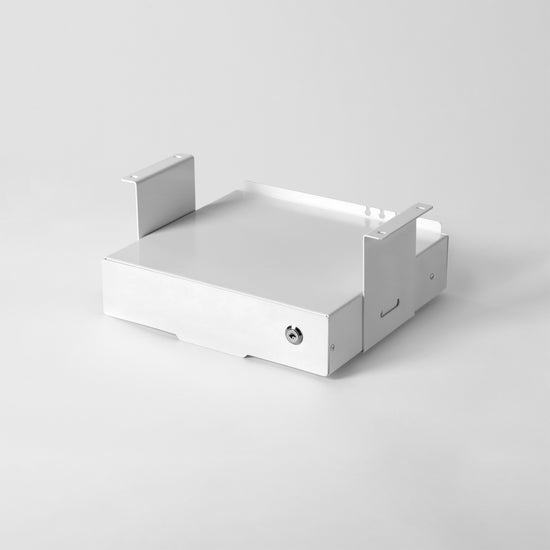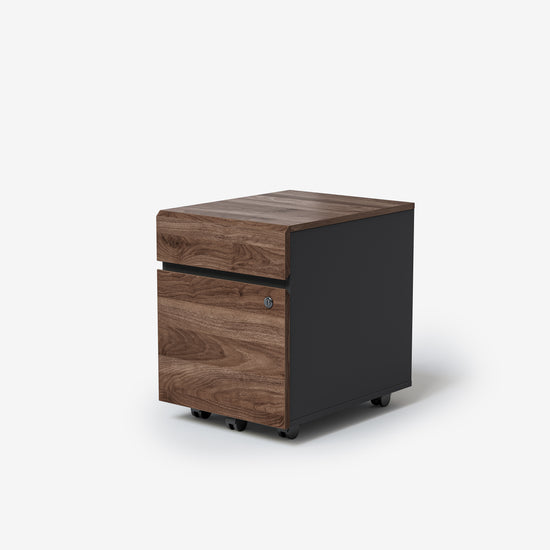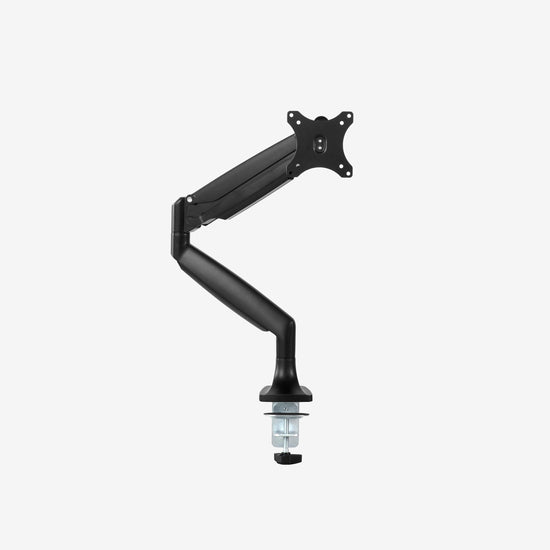How Does the Motor Make the Standing Desk Work?
The lifting mechanism of a standing desk ensures smooth, efficient, and safe transitions between sitting and standing positions. The motor, as the core component of the adjustable desk, enables effortless movement between different height settings.
The basic working principle is as follows: When the desk is powered on, the hand controller directs the central control unit to activate the motor. The motor then rotates, delivering specific speed and torque to drive the lead screw inside the desk legs. This rotation is converted into vertical linear motion, causing the desk legs to extend or retract. As a result, the standing desk moves up or down, achieving adjustable height settings.

For a single-motor lifting desk, one motor simultaneously drives both table legs to rise and descend. This requires a central drive shaft to transfer the motor’s rotation to the left and right legs. As a result, the motor must be positioned between the two legs and remains externally visible.
In a dual-motor lifting desk, an electric digital controller powers and balances the two motors in the standing desk. The digital control box connects via cables to the left and right motors in the frame legs, ensuring efficient synchronization. Similar to the single-motor design, sensors monitor the rotation of both motors, guaranteeing simultaneous ascent and descent. Unlike the single-motor version, these motors are concealed inside the frame legs, making them invisible from the outside.

How Does the Motor Affect Your Experience?
Before assessing how motors impact the user experience of height-adjustable desks, we must first understand motor performance, which consists of rotational speed (RPM) and torque (N·m). When evaluating a motor’s capabilities, its output speed and torque act like its "pulse" and "muscle", collectively determining the device’s operational power.
Rotational Speed (RPM): Measured in revolutions per minute (RPM), this indicates how many full rotations the motor’s shaft completes in one minute—essentially setting the motor’s work rhythm. For example, a motor rated at 3,000 RPM rotates 3,000 times per minute.
Torque (N·m): Expressed in Newton-meters (N·m), torque represents the rotational force generated by the motor—its "burst strength". For example, a motor with a rated torque of 5 N·m can produce a twisting force equivalent to lifting a 0.5 kg weight at a 1-meter lever arm.
Lifting Speed
The lifting speed of an adjustable desk is primarily determined by the motor's rotational speed (RPM). A higher motor RPM results in faster table movement, but it also generates increased noise.
Vernal employs a three-stage column design, which offers a longer lead compared to dual-stage columns. This allows the motor to operate more efficiently, delivering faster lifting speeds without excessive strain.
To optimize performance, Vernal’s engineers have meticulously balanced speed and noise reduction through precision structural design. The motor operates at a quiet 40–50 dB—well within comfortable hearing levels—while maintaining an industry-leading lifting speed of 34–40 mm/s, placing Vernal among the top-tier performers in the market.
Lifting Stability Performance
For the stability of lift table mechanics, single and dual motors will give different results. The single motor controls the motor input voltage through the hand controller, thus controlling the motor rotation. The motor's Hall signal is fed back to the hand controller, which adjusts the motor's speed in real time to control the table's smooth lifting and lowering. The motor position of the single motor is generally biased towards one column, and connects to the other column through the transmission rod. The transmission path is relatively long, and there will be the possibility that the two columns are not well synchronised.
Dual motors through the hand controller to transmit signals to the control box, the control box to control the motor rotation, and through the feedback of the Hall signal real-time adjustment of the left and right columns to maintain a certain speed, so as to achieve the effect of smooth lifting and lowering. Vernal's dual motors in the process of lifting and lowering, the two ends of the columns in synchronous force, through Vernal research and development of the control box for the precise signal feedback and send to ensure that columns lifting and lowering of synchronicity! Vernal's dual motors are synchronised at both ends of the column during the lifting and lowering process.
Sound Decibels
In addition to maximising the rotational speed, as in the case of the Vernal, the sound of the motors is reduced to a sound decibel that is comfortable for the human ear. The different table configurations corresponding to single and dual motors also affect the degree of sound level during lifting and lowering.
As mentioned in the opening paragraph, single motors require an additional transmission to distribute power to both columns, whereas dual motors can be integrated directly into the columns, eliminating the need for exposed transmission components. Vernal's dual-motor lifting table buries the motors within the table's column structure, and the use of materials that provide better sound isolation further reduces noise during lifting and lowering to give the user a quieter, more focussed environment.
Lifting Capacity
The load-bearing capacity of a lift table is affected by factors such as tabletop frame material, tabletop material, motor, and structural design. For motor performance, the higher the output torque of the motor, the higher the weight-bearing capacity of the table.
The maximum load-bearing capacity of the table refers to the weight that the table can bear without rupturing or falling under the fixed position. The table's rated load capacity is the weight that the table can carry without endangering the life of the product by being able to lift it properly.
After a series of studies, Vernal's motors provide the right output torque to enable the New Edition series of one-piece tables to be lifted and lowered smoothly and normally under a load of 120kg, which can fully cover the user's daily needs. At the same time, Vernal's motors also provide a maximum load capacity of 160kg, covering other load bearing possibilities.
Compared to other brands that advertise load-bearing data, which can greatly reduce the service life of a lift table or even make it impossible for users to lift the table when they put the corresponding weight of equipment on it, Vernal chooses to provide users with real data rather than advertise load-bearing data that deviates from their daily needs.

Pons and Cons of Single and Dual Motors
Single Motor
| Advantages | Disadvantages |
| Cost-Effective: Single-motor standing desks cost less than dual-motor ones. | Lower weight capacity: Single-motor desks typically support a maximum load of 80 kg. |
| Simplicity: Fewer components, easier maintenance. | Slower speed: The single-motor design results in comparatively slower raising/lowering movement. |
| Suited for light-duty use: For those with just a few items on their desk—the single motor handles it easily. | Potential stability issues: Single-motor desks may be more prone to wobbling, especially at higher elevations. |
Dual Motors
| Advantages | Disadvantages |
| Higher Weight Capacity: The Vernal dual-motor desk supports up to 180kg, making it ideal for heavy-duty setups with multiple monitors and equipment. | Higher Price: The extra motor and more sophisticated design make dual-motor desks more expensive. |
| Faster, Smoother Adjustment: Dual motors enable quicker and more seamless height transitions—perfect for users who frequently switch positions throughout the day. | |
| Enhanced Stability: With a motor in each leg, the dual-motor system delivers superior stability, even at full extension. | |
| Quieter Operation: Vernal’s innovative design encases the motors within the legs, reducing noise levels compared to exposed single-motor designs. |
Invest in Your Great Experience
Vernal's dual motor lift tables are all centred around real needs, from structural design to motor selection, all working to enhance the real user experience. Our lifting tables have a high quality load-bearing capacity, and can still maintain a silky smooth and fast lifting performance while carrying the heavy configuration you need in your daily life. With the design and development of the motors by our R&D team, Vernal's dual motors are able to find a perfect balance between lifting speed, lifting stability, and lifting sound decibels.
Choose Vernal New Edition and invest in a stable lifting experience, invest in peace of mind and invest in a good working experience!

- Regular price
-
£34.99 - Regular price
-
£69.99 - Sale price
-
£34.99

- Regular price
-
£129.99 £159.99 - Regular price
-
- Sale price
-
£129.99 £159.99





